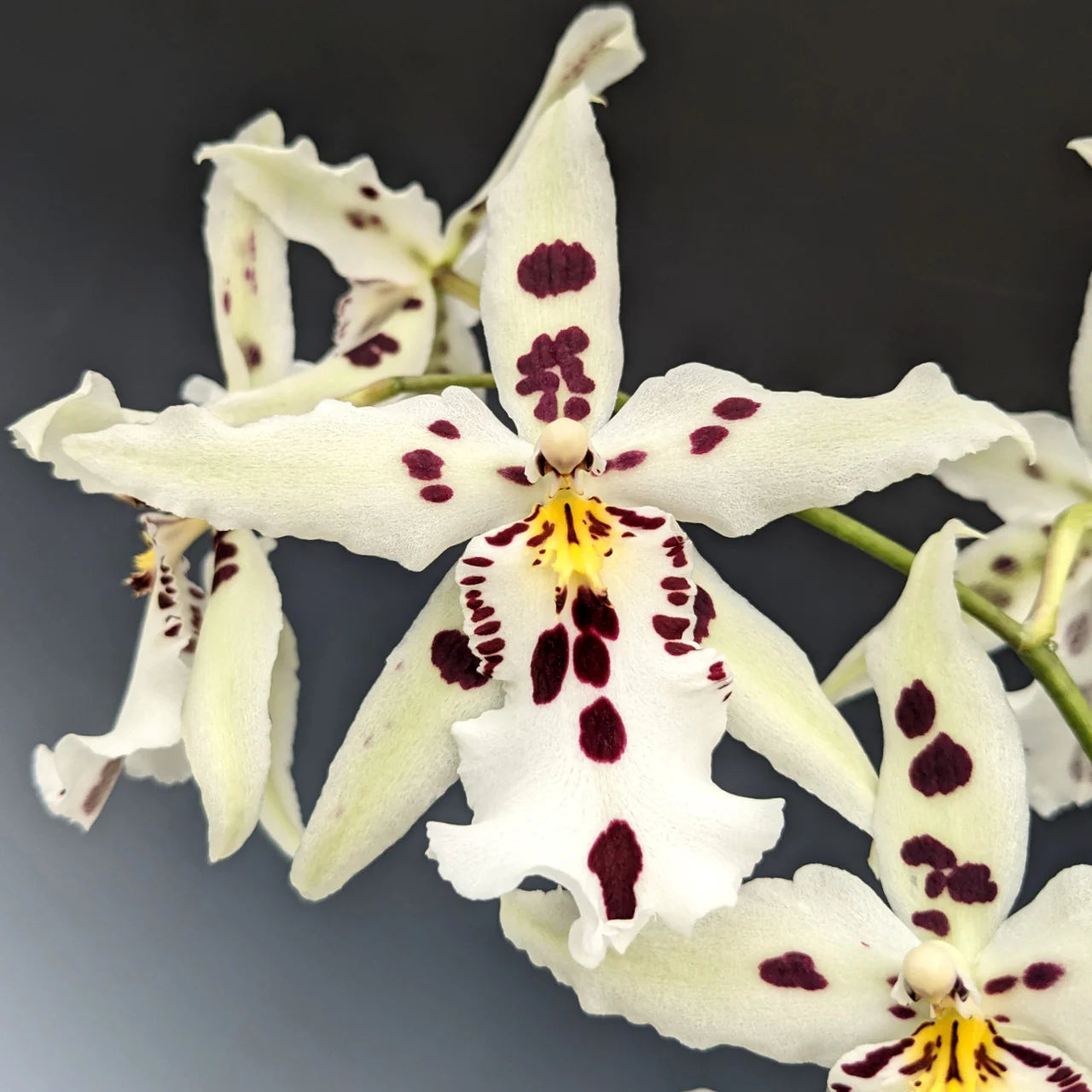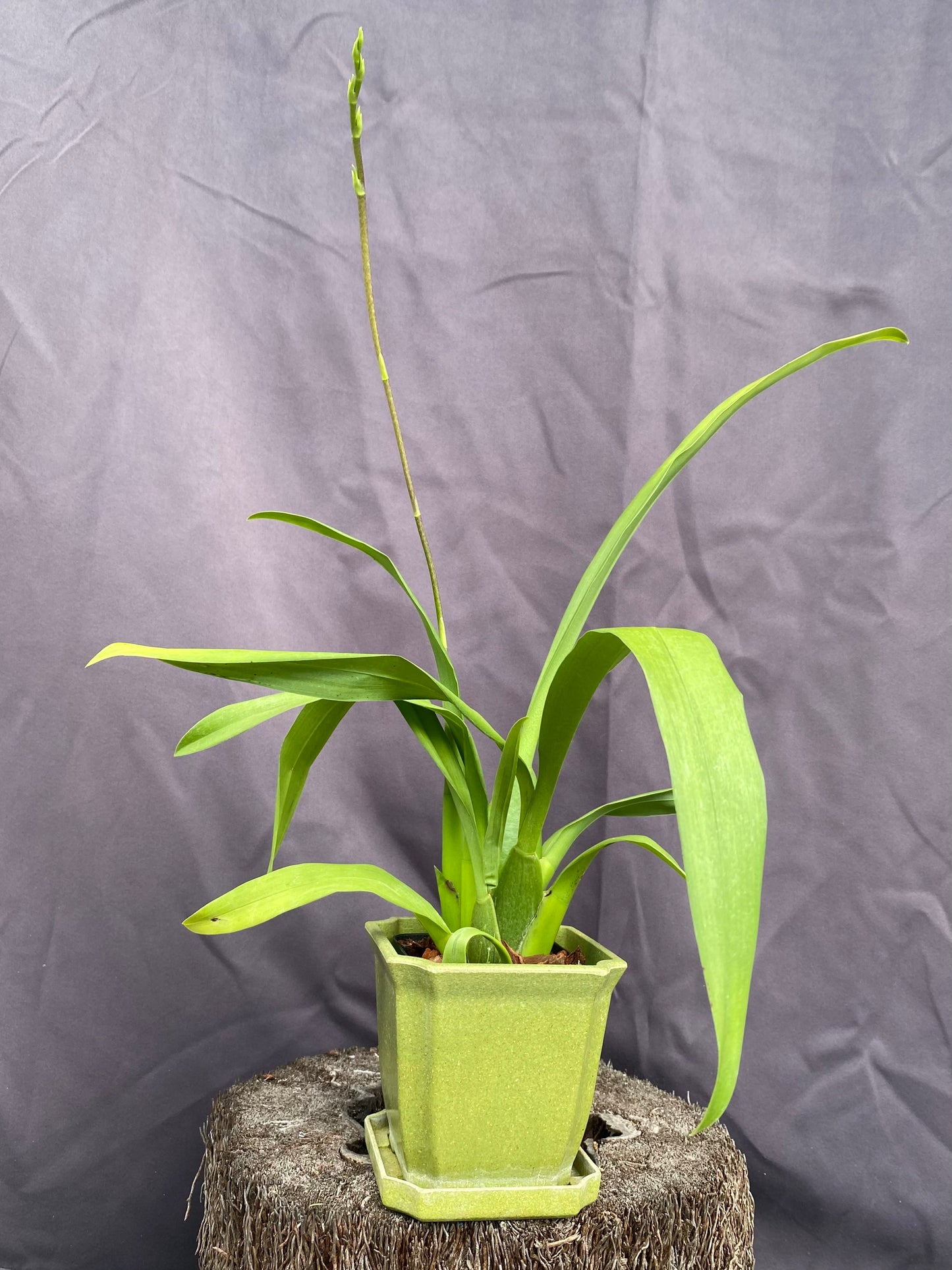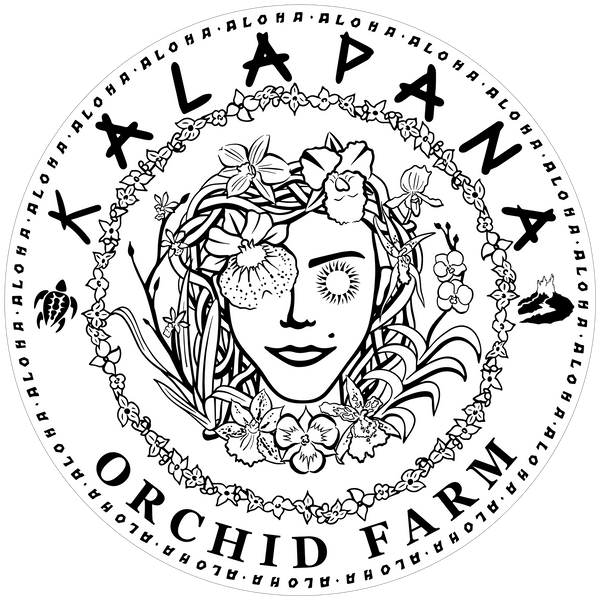Kalapana Orchid Farm
Bllra. Snowblind 'Sweet Spots'
Bllra. Snowblind 'Sweet Spots'
Couldn't load pickup availability
Bl. Snowblind 'Sweet Spots' is a fascinating hybrid, a cross between two complex intergeneric hybrids: Aliceara Peggy Clarke and Beallara Tahoma Glacier. To truly appreciate this beauty, let's trace its lineage back to the species that contribute to its unique charm.
Aliceara Peggy Clarke itself is a hybrid of Beallara Tahoma Glacier and Odontoglossum Royal Flush. So, Beallara Tahoma Glacier shows up on both sides of the family tree! Beallara Tahoma Glacier is a cross of Brassia Rex, Miltonia Purple Queen, and Odontoglossum cariniferum.
Brassia Rex is a hybrid of Brassia verrucosa and Brassia brachiata. Both are native to Central and South America. Brassia verrucosa, commonly known as the Warty Brassia, hails from Mexico, Guatemala, Honduras, and Nicaragua, growing as an epiphyte in humid mountain forests between 3,000 ft. and 5,000 ft. Temperatures range from 60°F to 80°F during the day and 50°F to 65°F at night. Brassia brachiata is found in Honduras, El Salvador, and Nicaragua, often in similar forest conditions.
Miltonia Purple Queen is a hybrid involving Miltonia spectabilis and Miltonia clowesii. Miltonia spectabilis is found in Brazil, typically as an epiphyte in humid forests from sea level to 3,000 ft., experiencing temperatures from 65°F to 85°F. Miltonia clowesii is also from Brazil, found in similar habitats and temperature ranges.
Odontoglossum cariniferum is a striking species from Costa Rica and Panama, growing as an epiphyte at elevations of 3,300 ft. to 6,600 ft. in cool, moist cloud forests. This translates to daytime temperatures of 60°F to 75°F and nighttime lows of 45°F to 55°F.
Bl. Snowblind 'Sweet Spots' carries a rich genetic tapestry of orchids from diverse Central and South American environments, leading to a remarkably adaptable and beautiful plant.
The foliage of Bl. Snowblind 'Sweet Spots' is typically strap-shaped, medium green, and leathery, growing from an oval to somewhat compressed pseudobulb. Pseudobulbs are generally 2 in. to 3 in. tall, with leaves extending another 8 in. to 12 in. The overall plant height is usually between 12 in. and 18 in.
The flowers are a delight, with a typical size of 3 in. to 4 in. across. The petals and sepals are a pristine white, creating a lovely contrast with the distinctive deep red or burgundy spotting that gives it the 'Sweet Spots' moniker. These spots are often concentrated towards the center of the flower, sometimes appearing as a flush on the lip. The lip itself is often white with similar spotting or a central splash of color. The flower shape is somewhat star-like, reminiscent of Brassia parents, with a flatter, broader lip. There is often a light, sweet fragrance, especially noticeable in warmer temperatures. This particular clone, 'Sweet Spots', has received an Award of Merit (AM) from the American Orchid Society for its outstanding floral quality. Blooming can occur at various times of the year, often multiple times from a mature growth.
Care Instructions:
Light: Medium to bright indirect light. Avoid direct sun, especially during the hottest part of the day, as it can scorch the leaves.
Water: Water thoroughly when the potting medium approaches dryness. Allow for slight drying between waterings. Avoid letting the plant sit in standing water.
Temperature: Intermediate to warm. Daytime temperatures should range from 70°F to 80°F, with nighttime temperatures between 55°F and 65°F.
Humidity: Moderate to high, 50% to 70% is ideal. Good air circulation is crucial to prevent fungal issues.
Potting Medium: A free-draining medium such as a fine-grade bark mix, sphagnum moss, or a mix of both. Repot when the medium begins to break down or when the plant outgrows its pot, typically every 1 to 2 years.
Share




